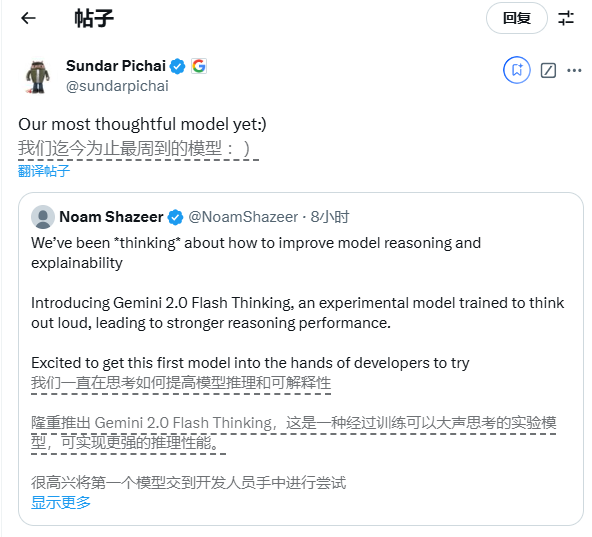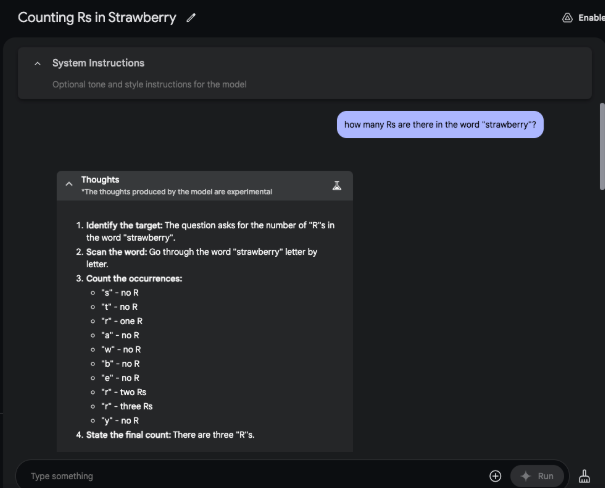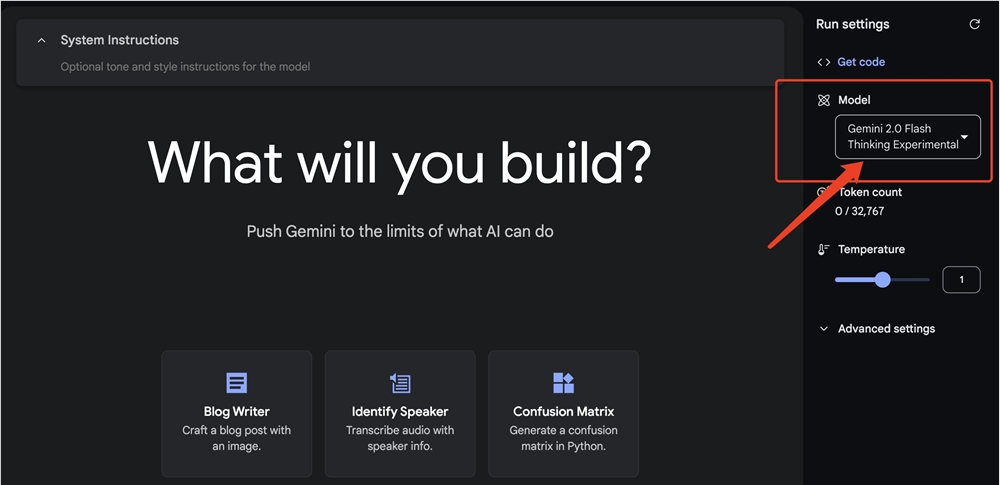Google recently released its latest multi-modal reasoning model Gemini2.0 Flash Thinking. This model is claimed to be Google's most powerful model to date, with fast and transparent processing capabilities and the ability to efficiently solve complex problems. Gemini2.0 Flash Thinking not only supports large-scale text processing, but also has native image upload and analysis functions, significantly expanding its application scenarios. Its transparent reasoning process, which displays the step-by-step thinking steps of the model through drop-down menus, solves the AI "black box" problem and provides users with a clearer understanding. This article will provide an in-depth analysis of the main features and functions of Gemini2.0 Flash Thinking and its comparison with other models, revealing its importance in the field of artificial intelligence.
Against the backdrop of increasingly fierce competition in the field of artificial intelligence, Google recently announced the launch of the Gemini2.0 Flash Thinking model. This multi-modal reasoning model provides fast and transparent processing capabilities for complex problems. "This is our deepest model yet," Google CEO Sundar Pichai said on social media X.

According to the developer documentation, Gemini2's Flash Thinking has stronger reasoning capabilities than the basic version of Gemini2.0 Flash model. The new model supports 32,000 input tokens (approximately 50 to 60 pages of text), and output responses can reach 8,000 tokens. Google says in a side panel of its AI Studio that the model is particularly useful for "multimodal understanding, reasoning," and "encoding."
Developer documentation: https://ai.google.dev/gemini-api/docs/thinking-mode?hl=zh-cn
Details about the model’s training process, architecture, licensing, and cost have not yet been released, but Google AI Studio shows that the current cost per token to use the model is zero.
A distinctive feature of Gemini2.0 is that it allows users to access the model's step-by-step inference process through a drop-down menu, which is not available in competing models such as OpenAI's o1 and o1mini. This transparent reasoning method allows users to clearly understand the process of the model reaching conclusions, effectively solving the problem of AI being regarded as a "black box".

In some simple tests, Gemini2.0 was able to quickly (within one to three seconds) correctly answer some complex questions, such as counting the number of letter "R"s in the word "strawberry." In another test, the model systematically compared two decimals (9.9 vs. 9.11) by analyzing the whole number and decimal places step by step.
LM Arena, a third-party independent analysis agency, rated the Gemini2.0 Flash Thinking model as the best performing model in all major language model categories.
In addition, the Gemini2.0 Flash Thinking model also has native image upload and analysis functions. Compared with OpenAI's o1, the latter was initially a text model and was later expanded with image and file analysis. Currently, both can only return text output.
Although the multi-modal capabilities of the Gemini2.0 Flash Thinking model expand its potential application scenarios, developers should note that the model currently does not support integration with Google search, nor can it be integrated with other Google applications and external tools. Through Google AI Studio and Vertex AI, developers can experiment with this model.

In the increasingly competitive AI market, the Gemini2.0 Flash Thinking model may mark a new era of problem-solving models. With its ability to handle multiple data types, provide visual reasoning, and operate at large scale, it has become an important competitor of the OpenAI o1 series and other models in the inference AI market.
Highlight:
The Gemini2.0 Flash Thinking model has powerful reasoning capabilities and supports 32,000 input tags and 8,000 output tags.
The model provides step-by-step reasoning through drop-down menus, enhancing transparency and solving the AI “black box” problem.
It has native image upload and analysis capabilities, expanding multi-modal application scenarios.
All in all, the Gemini2.0 Flash Thinking model has demonstrated strong competitiveness in the field of artificial intelligence with its powerful reasoning capabilities, transparent reasoning process and multi-modal functions, opening up new possibilities for future AI applications. But some of its current limitations, such as its integration with other Google services, are also worthy of attention.